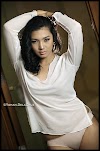Following the election of Donald Trump, we've begun discussing art with a social conscience by artists such as Ben Shahn or Alan Cober. What can it accomplish? How meaningful is it today?
In my view, one of the most striking collections of such art in the past fifty years was a project by Victor Juhasz which was posted by GQ. Juhasz spent three weeks with an army medevac unit in Kandahar, Afghanistan to witness first hand what was happening on the front lines.
He took his expedition solo, and on his own initiative. His journal recounts several extraordinary moments, such as this effort by a Black Hawk helicopter to rescue casualties from an armored vehicle (MRAP) had been turned into a "crushed toy" by an explosive device. Trying to avoid Taliban snipers, the helicopter with Juhasz came swooping to the rescue at about 160 miles per hour for a "hot zone" landing:
Foul-smelling smoke and ash from the burning MRAP, some of it still quite hot, poured in through the open windows of our Black Hawk, swirling and landing everywhere in the cabin as we drew closer. Bitter-tasting cinders filled my accidentally opened mouth. Edstrom banked the Black Hawk hard and almost on its side as he slowed to make a landing. A spot had been designated in advance, and Edstrom lowered the bird, but the ubiquitous red-clay "moon dust" kicked up by the rotor blades created a brownout. Edstrom lost all visuals and, unable to see where he was landing, aborted the attempt, doing another accelerating loop around the village and fields, in effect another roller-coaster ride, to come in for another try.But the truly extraordinary thing about Juhasz's drawings and paintings was not the high speed or the explosions which dominate the art of "armchair" war artists. It was the humanity of the individuals he captured in extreme situations.
Juhasz wrote, "A good drawing walks an interesting tightrope of being in the moment and reflecting on that moment, from the visual impact of a subtle gesture to the energetic desperation of concentrated activity."
I find his drawings beautiful and devastating.
His impressions showed me a side of the war that I never got from photographs.
Juhasz took his responsibilities as a witness seriously. He wrote:"I leave with far more butterflies about my skills than over concerns about safety or injury."
You can find his poignant art from Afghanistan and from Juhasz's other military excursions on his website.
So what is the potential for such witness art today? It is certainly a fitting tribute to the soldiers whose sacrifices might otherwise go unnoticed. But beyond that, such images could be important for a culture that seems quick to pull the trigger but reluctant to do the hard reading about the causes and effects of conflicts. A president elect who says he doesn't like to read details, and who says his equivalent of military service in Vietnam was avoiding STDs back home, could certainly benefit from studying these pictures.














0 Yorumlar